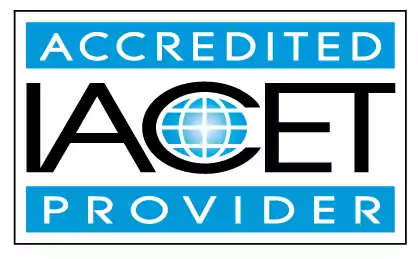Recognize the importance of maintaining a balance between teacher directed and child directed activities
Discover the importance of maintaining a balance between teacher directed and child directed activities in early childhood education and child care centers. Gain a deeper understanding of teacher direct vs. child directed activities and how they contribute to a well-rounded learning environment.Trainings incorporating this outcome
Proficiency Level
Target Audience
States
Alabama (1) Alaska (1) Alberta (1) Arizona (1) Arkansas (1) Australia (1) California (1) Colorado (1) Connecticut (1) Delaware (1) District of Columbia (1) Florida (1) Georgia (1) Hawaii (1) Idaho (1) Illinois (1) Indiana (1) Iowa (1) Jamaica (1) Kansas (1) Kentucky (1) Louisiana (1) Maine (1) Manitoba (1) Maryland (1) Massachusetts (1) Michigan (1) Minnesota (1) Mississippi (1) Missouri (1) Montana (1) Nebraska (1) Nevada (1) New Hampshire (1) New Jersey (1) New Mexico (1) New York (1) Newfoundland and Labrador (1) North Carolina (1) North Dakota (1) Nova Scotia (1) Ohio (1) Oklahoma (1) Ontario (1) Oregon (1) Pennsylvania (1) Prince Edward Island (1) Puerto Rico (1) Quebec (1) Rhode Island (1) Saskatchewan (1) South Carolina (1) South Dakota (1) Tennessee (1) Texas (1) Thailand (1) United Kingdom (1) Utah (1) Vermont (1) Virgin Islands (1) Virginia (1) Washington (1) West Virginia (1) Wisconsin (1) Wyoming (1)
120 hours courses
Related Outcomes
- Demonstrate an understanding of teacher direct vs. child directed activities
- Demonstrate an understanding of teacher vs. child directed activities.
- Identify and understand the requirements of Child Care Subsidy (POC), Child and Adult Food Program, MSDE Child Care Credential, Tiered Reimbursement, and the Child Care Career and Professional Development Fund
- Identify appropriate practices for identify and demonstrate an children: Teacher directed vs child directed
- Identify appropriate practices for teacher- and child-directed activities.
- Recognize the importance of music in both child development and curriculum.
- Recognize the importance of providing activities that reflect a welcoming environment for all children, youth and families, regardless of culture, language, or religion, or strengths, talents, and abilities.
- Recognize the importance of maintaining confidentiality and privacy in communication with families.
- Teachers will identify the important role parents and/or family members play in their child's education.
- Recognize the importance of demonstrating respect for all diversity and providing activities that reflect a welcoming environment for all children, youth and families, regardless of culture, language, or religion, or strengths, talents, and abilities.
- Recognize the importance of maintaining confidentiality and privacy in communication with staff.
- Recognize theory and theorist in relation to child development and approaches to learning.
- Identify responses to typical daily child care scenarios with solutions that are aligned with Child Care Regulations
- Recognize the importance of clear and appropriate articulation of sounds and words when communicating..
- Recognize the importance of consistency, continuity, and responsiveness in supporting pro-social behaviors in children.
- Recognize the importance of demonstrating respect for the diversity of all children and youth and families’ culture, language, and religion in all interactions (anti-bias and cultural responsiveness techniques).
- Recognize the importance of problem solving and conflict resolution strategies with community members and families.
- Recognize the importance of collaborating to improve academic performance.
- Demonstrate understanding of strategies that utilize good time management practices for teachers and child care providers.
- Demonstrate an understanding how to maintain a safe environment under the guidance of the Office of Child Care Regulations.
Related Articles
- Effective and Engaging Classroom and Home Daycare Room Arrangements
- New Training Requirements from Office of Child Care/MSDE
- CANADA - Ontario
- A Step-by-Step Guide on Obtaining Your CDA Council Number
- North Dakota and the Child and Adult Care Food Program
- The Power of Play: Unleashing Potential in Early Childhood Education
- Unlocking the Power of DAP
- Giggles and Learning: How Telling Jokes Can Boost Your Classroom’s Morale!
- Best Practices for Classroom Technology Integration, Screen Time Management, and Online Safety
- Balancing Routine and Flexibility: Creating a Structured Yet Adaptable Schedule for Children
- Wobble Boards and Balance Beams: How Physical Movement Supports Somatic Healing in children
- Cocoa, Cookies, and Cognitive Development: The Holiday Nutrition Guide for Little Learners
- Ensuring Classroom Safety: The "1, 2, 3, Eyes on Me" Tool
- Everything You Need to Know About Adult and Child CPR
- A Step-by-Step Guide to Accessing Your DCF Training Login
- SIDS Certification: Why Every Childcare Provider Needs It
- When Seconds Count: Real-Life Cases Where Health & Safety Training Saved Lives
- 🧩 What Does ABA Look Like in the Classroom? 🎓 What Teachers Should Know
- Child Care in Minnesota: What’s Coming in 2026
 12 CEUs
12 CEUs